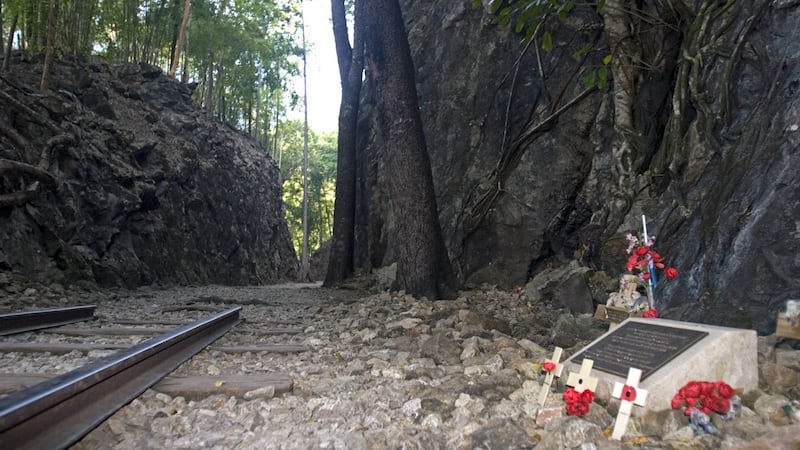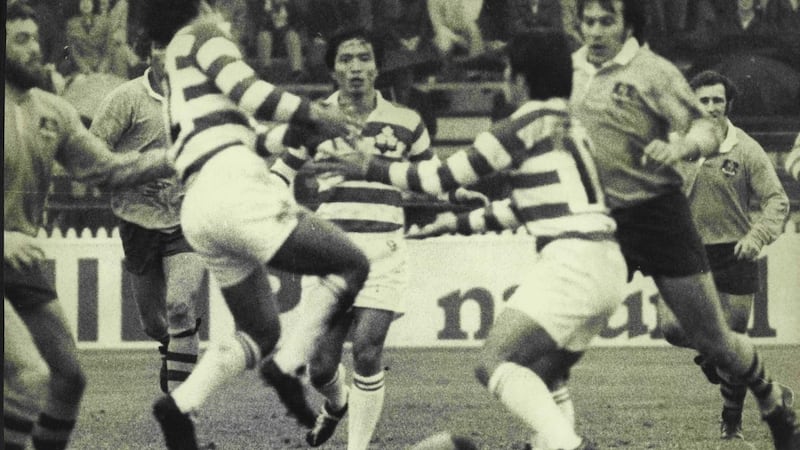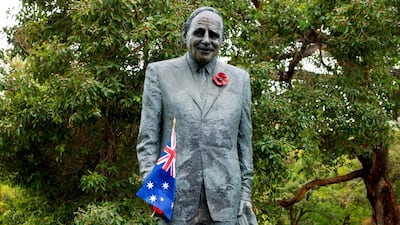As a boy, when I first saw Japan play they were called the Cherry Blossoms. It was their first ever Test match against Australia at the Sydney Cricket Ground in 1975 and the game was the brainchild of one of Australia's most revered sons, the former Wallaby Dr Edward 'Weary' Dunlop.
Known universally as Weary, he was an overachiever. Having excelled at Australian Rules, he was also a champion boxer but rugby was his passion. As a tall, aggressive flanker or lock, he was a member of the first Wallabies team to win the Bledisloe Cup from New Zealand in 1934.
Weary also had a considerable intellect, studying medicine at Melbourne University. He had graduated from St Bartholomew's Medical School in London when war broke out in 1939 and volunteered in the Australian Army as Medical Officer.
In 1942 he was in Java as the Japanese army invaded. As a doctor, he was offered evacuation before the invasion but chose to stay and care for his men. They were overrun by the Japanese. As the ranking colonel, he reluctantly assumed leadership of 1,000 Australian POWs, known as Dunlop’s 1,000.
They were transported into the unspeakable cruelty of the construction of the Burma-Thailand railway. Here the Japanese fascists, one of the 20th century’s cruellest regimes, created POW slave camps to build their railway. Starvation and brutality were inflicted on the local people and the POWs. Dysentery, cholera, diarrhoea, tropical leg ulcers and catastrophic work injuries decimated the locals and the POWs. The depravity that Dunlop’s men endured is beyond comprehension.
Hellfire Pass
Weary’s group of POWs were forced to cut through a steep ridge of rock using only hammers and chisels. They were pressed into the torture of working 18-hour shifts. To work through the night, the guards created fires to light the cutting. As the skeletal bodies of the POWs cast spectre like shadows onto the rock walls, the infamous Hellfire Pass was created. It killed one in three of those who worked there.

With no medicine or equipment, Weary and his doctors were forced to improvise. They found that fractured bones could be held together by driving a metal nail through both bones. “It was like something you had read from the medieval times,” Weary said. It was pathetic, disgusting and heroic all at once.
Weary is credited with saving the lives of hundreds of his fellow prisoners, not only by his skills as a physician but also because of his bravery in standing up to his captors in trying to protect his sick and starving comrades from death on the work gangs.
On one occasion Weary used his body as a shield as he stood between the bayonet of a Japanese soldier and a POW who had been blinded and had lost a leg in a work accident. Because the POW could not work, the guard wanted him dead.
Weary also suffered torture. After an altercation with the slave camps leadership, he was told he was to be beheaded. Weary had witnessed this barbaric act of murder carried out on other prisoners. Blindfolded, and forced to kneel beside a tree, Weary heard the Samurai sword scrape from its scabbard and the hiss of the blade as it slashed through the air.
Then a chopping sound as the deadly force of the blade was buried deep into the trunk of the tree, centimetres above his head. His captors wanted to break Weary’s spirit in front of his men to diminish his power by humiliation.
How Weary rose from his knees and returned to care for the sick and dying as well as continuing to rage against the cruelty of the prison’s regime remains a story of an indomitable spirit that is so magnificent, it is hard to conceive its truth. For all of this and much more, his men adored him.
After he was liberated, if any person ever had a reason to harbour resentment it would have been Weary. In another act of inspirational bravery, after enduring the worst of human cruelty, Weary made the conscious decision to reject hate and revenge.
Weary is revered because of the many actions he undertook, across many communities in southeast Asia to build bonds of reconciliation. In the decades after the war, despite the new Japan that was emerging from the ashes of the fascists, the stigma of their legacy caused their rugby team to be shunned. Apart from a single match against France in 1972, no tier one country had awarded caps in matches against Japan.
To break this isolation and bring Japanese rugby forward, Weary lobbied the Japanese and Australian governments for the Cherry Blossoms to play a Test series in Australia.

Friendship
For many years Weary tirelessly used his profile to influence those in power in Japan and Australia to reach out and work towards a better future. Eventually, hands that were once clenched into fists, slowly opened into grasps of friendship.
The result was two Test matches in Australia between the Wallabies and the Cherry Blossoms in 1975. The two games of rugby between former enemies were not Weary’s end goal. He was playing a longer game and rugby was the vehicle to start healing all the rugby communities.
The Brave Blossoms, who are playing Ireland at the Aviva today and who recently played the Wallabies, are beneficiaries of Weary's tenacity and legacy. Proof that Weary's long-game strategy worked.
In the midst of today’s culture and climate wars, the far left versus the far right, Weary’s message still resounds. When things appear to be at their darkest, there is hope. Hatred and violence are never the answer. Finding a way to stand in the other person’s shoes and see their point of view, even if it’s the total opposite to yours, is achievable. It’s all simply a matter of choice but you have to be brave.
At the Australian War Memorial in Canberra, there is a statue of Weary. He is not depicted in his prime as a Wallaby or as a professional in his medical uniform. The statue is of an older Weary. His buttoned suit is ruffled and he is carrying a well-worn hat in his left hand.

His expression is kind and understanding, with the promise of an enduring smile. It is as if he can see the good in us all.
His right hand is slightly lifted and his fingers are beginning to spread, as if he is about to reach out, across some impossible divide, to take your hand and hold it, in an ancient act of friendship.















